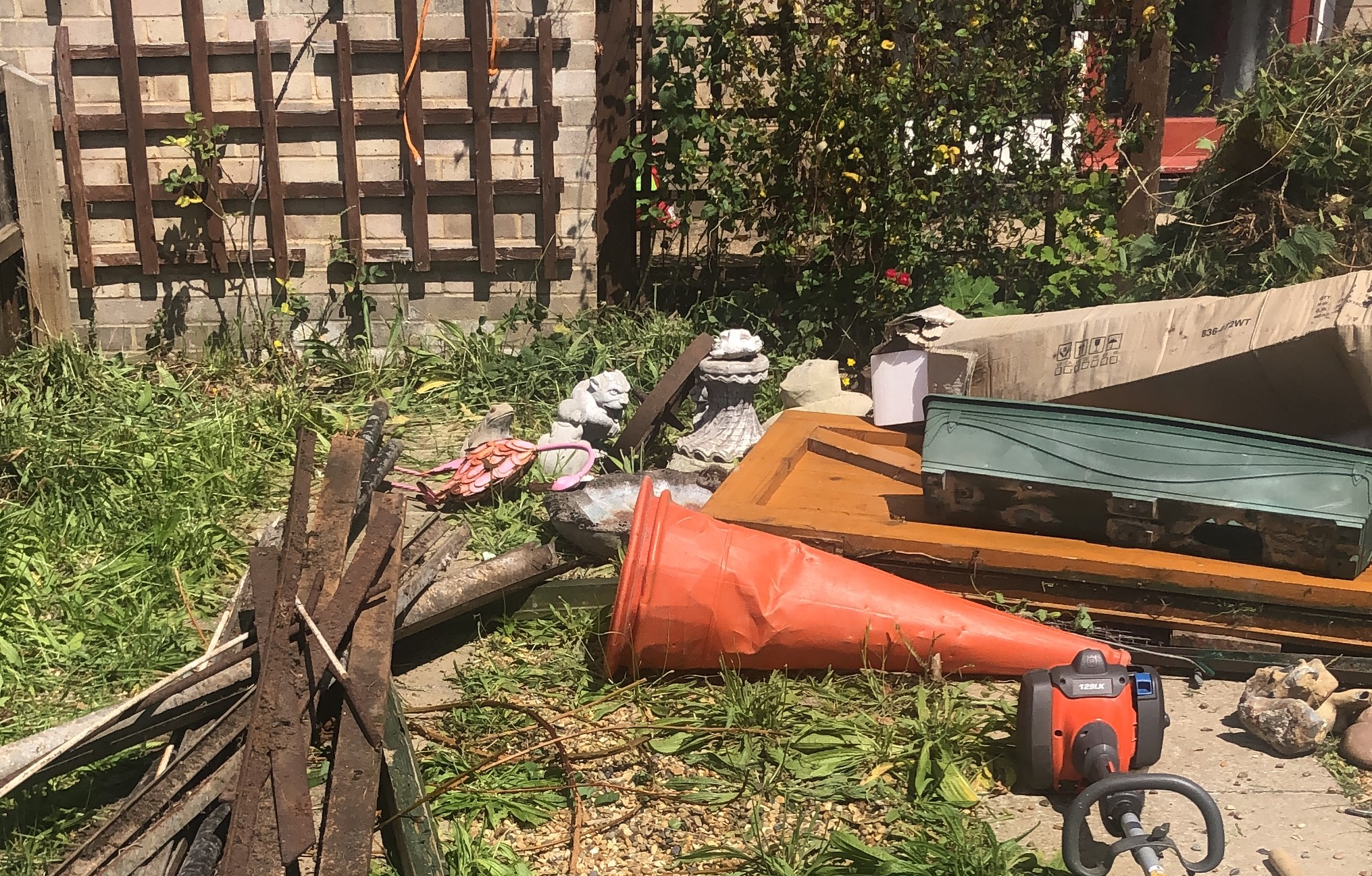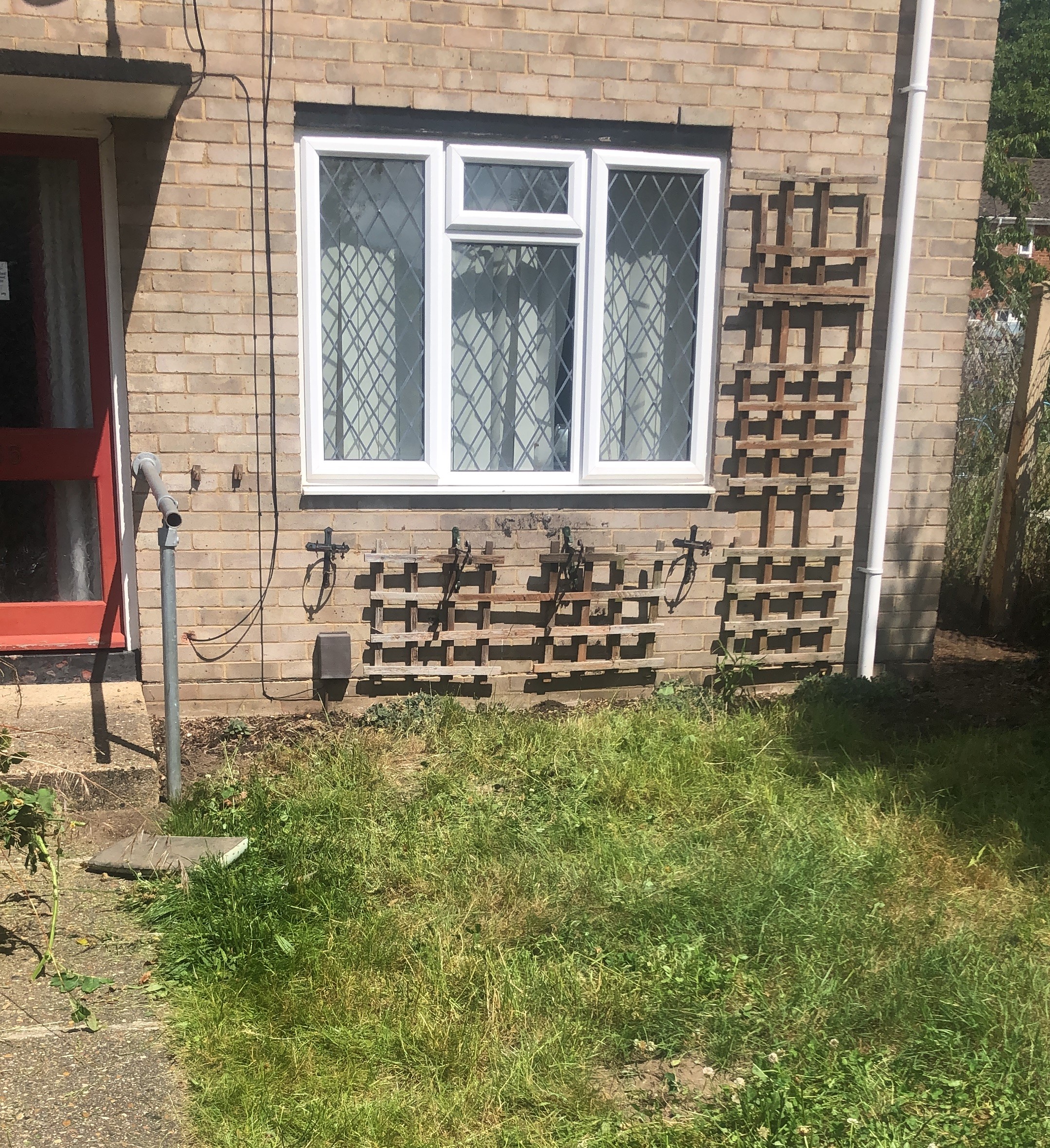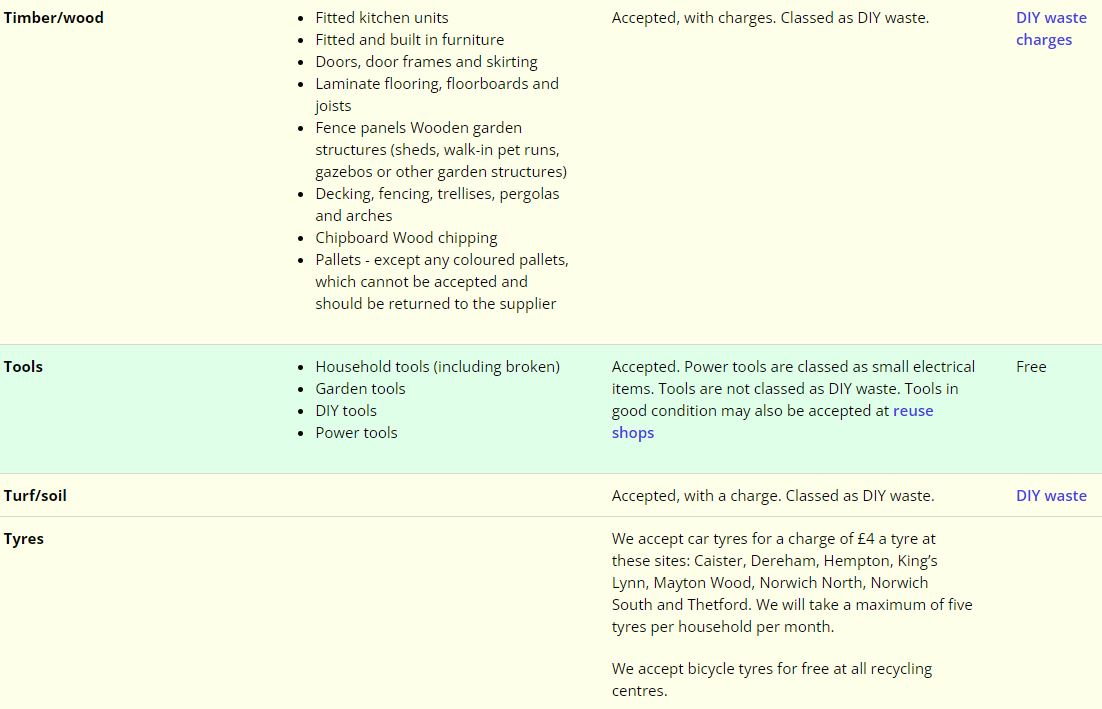How I was told to pay a 'DIY waste' fee to throw away broken garden trellis
Why you may need to check the rules at your local rubbish tip – and identify whether they charge for 'DIY waste' – when renovating your home or garden

A few months ago, I helped a family member tidy up his three-bedroom ex-council house. The decor inside the terraced home hadn't been updated in decades and there was a lot of rubbish left in the garden from the previous occupants.
The house needed a clear out and lick of paint, plus a new kitchen but that was a job for another day. While he started work inside, I was tasked with sorting out the front and back garden.
The garden design was small but came complete with a traffic cone, a broken TV, an old wooden door and some bits of old furniture. Broken garden trellis would have to be unscrewed from the front walls of the house and overgrown leylandii needed chopping back where it had blocked access to the back of the house. A rather fabulous assortment of gargoyles, garden statues and gnomes also needed rehoming, a few which I must confess found their way into my own garden.
However, I would soon discover that disposing of these items at the local recycling centre could attract a charge.
A hatchback full of rubbish destined for the tip
It took me a day to clear the garden and load everything into the back of my trusty 2001 VW polo. This included a number of bags of garden waste, the TV and the broken bits of garden trellis. A couple of the gargoyles went to the tip too. My plan was to tidy it up first, before looking at low maintenance garden ideas.
I drove a couple of miles to the recycling centre and found all the bays were being used by commercial vans unloading waste. Trade waste is chargeable, but on this occasion I didn't notice any money or card payments changing hands. They were chucking in all sorts of stuff into the huge metal rubbish vats, and seemed to be on good terms with the staff.
Eventually a space came available and I reversed in, turned off my little car's engine and climbed out with my work gloves on. The rubbish tip staff approached and began to monitor every item that came out of the car.
Bring your dream home to life with expert advice, how to guides and design inspiration. Sign up for our newsletter and get two free tickets to a Homebuilding & Renovating Show near you.

How broken garden trellis is 'chargeable'
I felt like a criminal about to be rumbled, although I was unaware of my crime. I pieced through the rubbish inside my hatchback and tentatively pulled out a bag of garden waste. One of the men followed me up the metal steps to watch as the greenery tumbled out of the bag into the giant metal bin.
Next, I dared to pull out the broken garden trellis. This immediately excited the staff and they leapt into action. "That's DIY waste," one of the men said. "That's chargeable."
"Surely it's garden waste, not DIY waste?" I asked with a politeness you adopt when you get the feeling the rules are entirely subjective.
"Got screws in it so that's DIY waste," he replied. "But we'll allow it, only this once. You'll need to pay next time." I had passed the test, fortunately as I hadn't brought my credit card along.

Council rubbish tips still charging for 'DIY waste'
I went back and read up on Norfolk County Council's rubbish tip rules and it turns out it is subjective as to what the staff consider DIY waste. It clearly states on their website: "Any decision made by our staff about DIY waste will be final."
I had been right to carefully choose my words. It also explained why all the commercial vans were able to unload without any trouble – trade waste is also subject to a separate charge – while my little VW polo had fallen under scrutiny.
And more alarmingly, it turns out that around a third of councils in the UK are charging households for DIY waste too, as well as forcing households to a limited number of available slots, rather than being able to use the council facilities freely.
All the while, it seems, while claiming that it wouldn't cause an increase in fly-tipping. "Previous changes to our recycling centre service, such as making sites part time, have not shown an increase in illegal dumping of waste. Other councils who have introduced a similar charge for DIY type waste have not seen a significant increase in fly-tipping," it claims on Norfolk County Council's website.
We tried to find a list of councils that charge for DIY waste and ones that don't, but it was not an easily accomplished task.
What is defined as 'DIY waste'?
Working out what classifies as household waste and what is DIY waste could be a minefield too, and appears to almost encompass the majority of items you might want to dispose of in your home.
To give you an idea, Norfolk runs a "Pay As You Throw" service at its council-run rubbish tips and classifies a broken TV, kitchen appliance or an old sofa as household waste, but any timber, flat glass of any kind, guttering, felt or uPVC as DIY waste and chargeable at a rate of £5 for an unsorted 80 litre sack, which is about the size of your average bin bag.
A bag of soil is also considered DIY waste and is £5 a bag, while a bag of rubble, which includes tiles, bricks, roof tiles, stones and paving slabs, is £3 a sack.
Laminate is also considered DIY waste in Norfolk but, oddly, carpet, vinyl, underlay and lino is considered household waste and is free to throw away.
Fibreglass is DIY waste as is any type of insulation. Bath and shower trays are chargeable as DIY too as is pond liner and weed membrane. Oil tanks and storage tanks are also DIY waste, as is sand and any "walk in structure".
Pergolas, trellis, sheds, fence panels and posts, chipboard, fitted or built-in furniture (including wardrobes), decking, pet runs, gazebos, garden arches, floorboards, skirting, pallets and other types of garden structure are all chargeable DIY waste too.
Meanwhile, plasterboard, perhaps unsurprisingly, is also considered DIY waste and is chargeable at £9 per 80-litre bag or £4.50 for a half bag. Scrap metal is free.
Of course, this differs from council to council too.
Why councils are able to charge for DIY waste
Councils were originally banned in 2015 from charging individuals for disposing of household waste. However, they were not banned from charging for construction waste.
This appears to have been intended for builders and those in the construction industry but presented a loophole. As a result, councils began charging anyone for disposing of construction waste, and over time in some areas of the country homeowners doing DIY were included in this.
Government to ban tips charging for 'DIY waste'
Interestingly, it appears that the government does not agree with councils charging householders to dispose of so-called DIY waste. Last year, the Department for the Environment, Food and Rural Affairs (DEFRA) held a consultation about preventing councils from being able to charge for DIY waste.
The consultation said: "Government believes householders should not be charged to dispose of DIY waste. We are proposing changes to allow householders to deposit DIY waste for free. This will reduce the potential risk of fly-tipping, littering and backyard burning which create additional costs for local authorities and causes environmental issues. "
MP Jo Churchill added at the time: "I want to make sure that recycling and the correct disposal of rubbish is free, accessible and easy for householders."
The consultation also sought to prevent recycling centres imposing booking systems on households to be able to use their local recycling centre. This is a recently emerging trend which was implemented by some councils during the pandemic, but has since been used to limit how often householders can visit their local rubbish tip.
But, despite the consultation last year, it isn't clear when measures to stop councils charging for DIY waste will be rolled out. In the meantime, some councils are continuing to charge DIYers and those taking on home improvement projects, with even some normal household waste being included in their "DIY waste" criteria.
Norfolk County Council was given the opportunity to comment for this article but had not released a statement at the time of publishing.

Amy spent over a decade in London editing and writing for The Daily Telegraph, MailOnline, and Metro.co.uk before moving to East Anglia where she began renovating a period property in rural Suffolk. During this time she also did some TV work at ITV Anglia and CBS as well as freelancing for Yahoo, AOL, ESPN and The Mirror. When the pandemic hit she switched to full-time building work on her renovation and spent nearly two years focusing solely on that. She's taken a hands-on DIY approach to the project, knocking down walls, restoring oak beams and laying slabs with the help of family members to save costs. She has largely focused on using natural materials, such as limestone, oak and sisal carpet, to put character back into the property that was largely removed during the eighties. The project has extended into the garden too, with the cottage's exterior completely re-landscaped with a digger and a new driveway added. She has dealt with de-listing a property as well as handling land disputes and conveyancing administration.

